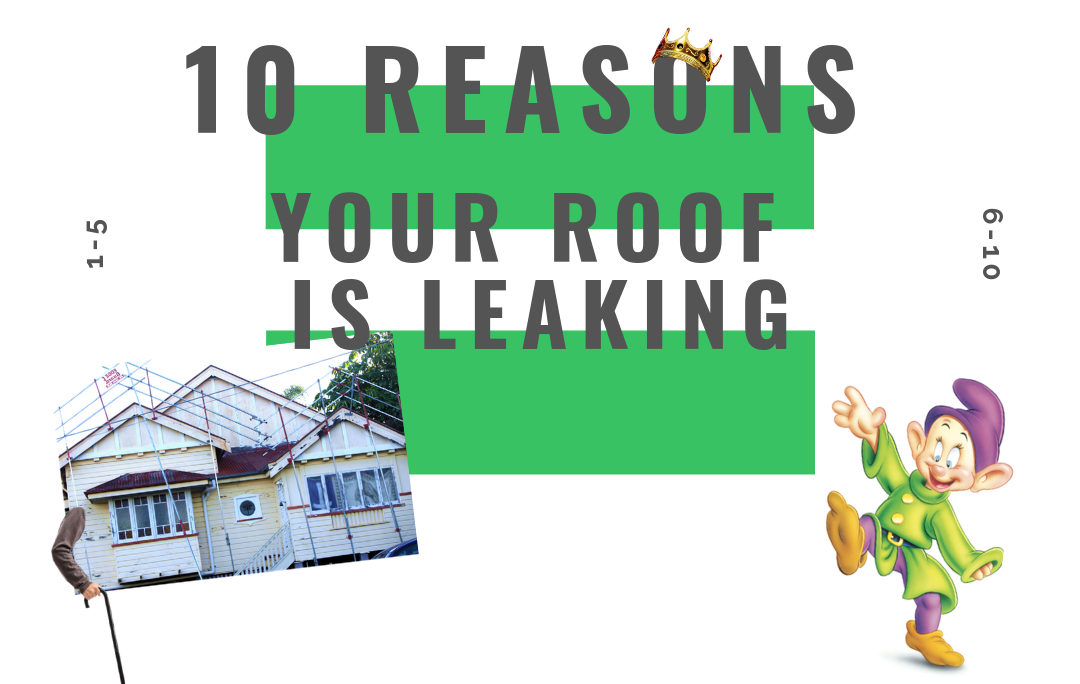
Have you got a troublesome drip after a downpour of rain? Or are those water stains and mouldy spots on the ceiling getting bigger by the day? Sounds like you've got a leak! Identifying the root cause of a leak can be a difficult task; it may be a combination of reasons, or the symptoms may present in one section of the house but be caused by something somewhere completely different. Here are 10 possible causes for your leak - or things to look out for to prevent them!

1. Aging Materials
This is probably the most obvious cause for roof leaks, but symptoms may present in a variety of ways, often resulting in an inability to prevent water ingress. As time passes, metal roofing materials will deteriorate due to the normal wear and tear of being constantly exposed to the elements. Despite having a considerably long lifespan compared to other roofing materials, the continual expansion and contraction of metal as the weather changes can impact the integrity of the roof over time. If your roof is approaching 20+ years, it might be worth having a qualified roofer inspect for any tell tail signs of deterioration.

2. Problematic Penetrations
“Penno” is roofer talker for ‘penetration’. In a perfect world, roof penetrations wouldn’t exist. In reality however, they can be an unavoidable part of a building’s design. Chimneys, vent pipes, skylights, exhausts and air conditioning units are all types of penetrations - and ones that we rely on to improve the conditions of occupancy within the building. The problem however, is that these penetrations constitute a break in the ‘building envelope’ - the thing that keeps what’s out from getting in. If the flashings and sealants around these weak spots are not installed or maintained correctly, there’s potential for water to enter at these points. In addition, if your roof is 10 years or older, there is a chance it was installed prior to the introduction of compulsory dry panning. Dry pans are flashings designed specifically to lead water away from penetrations - without them, the risk of water ingress is substantially increased.
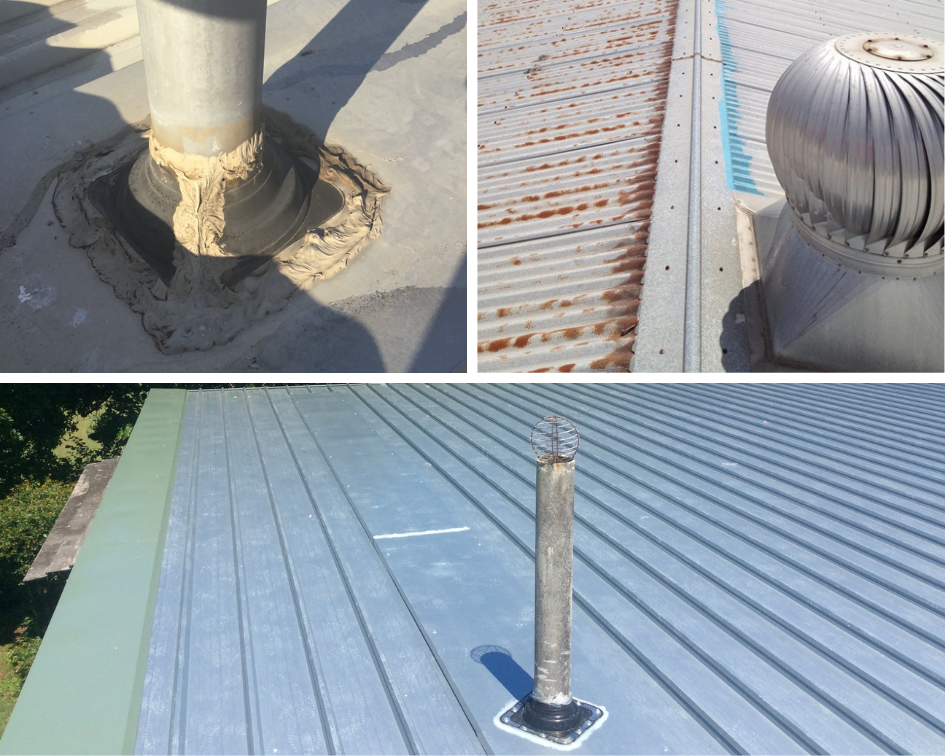

3. Blocked gutters can't drain
If your gutters are stuffed to the gills with leaves and other debris, they won’t be able to perform as designed. When water can’t drain efficiently, you run the risk of it overflowing into vulnerable internal spaces within the roof. Regular gutter maintenance will ensure unobstructed drainage.


4. Unfit or poorly designed and installed flashings
Flashings are sections of folded metal installed over joins in the roof construction to prevent water seeping in and causing damage. Sometimes it takes a bit of finesse to install these so that they’re water tight, and if the appropriate attention to detail isn’t applied, water may sneak into the roof cavity.
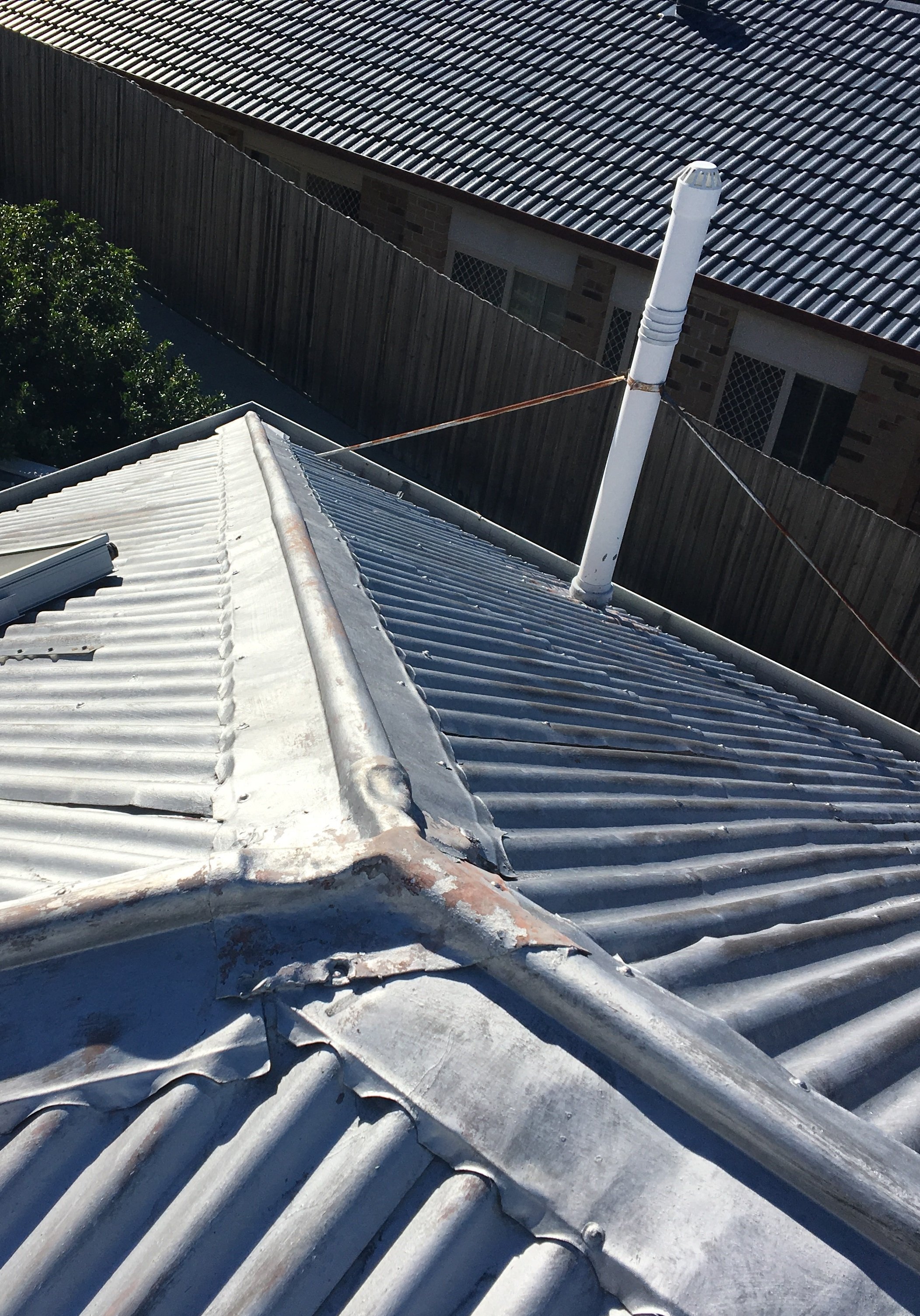

5. Box gutters
Box gutters or ‘internal gutters’ are notoriously problematic roofing features. While often unavoidable, the nature of their design means that unless installed with 100% accuracy, water may not be able to drain efficiently. Unlike in eaves gutters, where the majority of overflow is outside the building, water in box gutters is at a much higher risk of overflowing into the internal spaces below - spaces that are often hard to access or directly impact the function of your home. In addition, if water is not able to drain it may pool and lead to rusting.
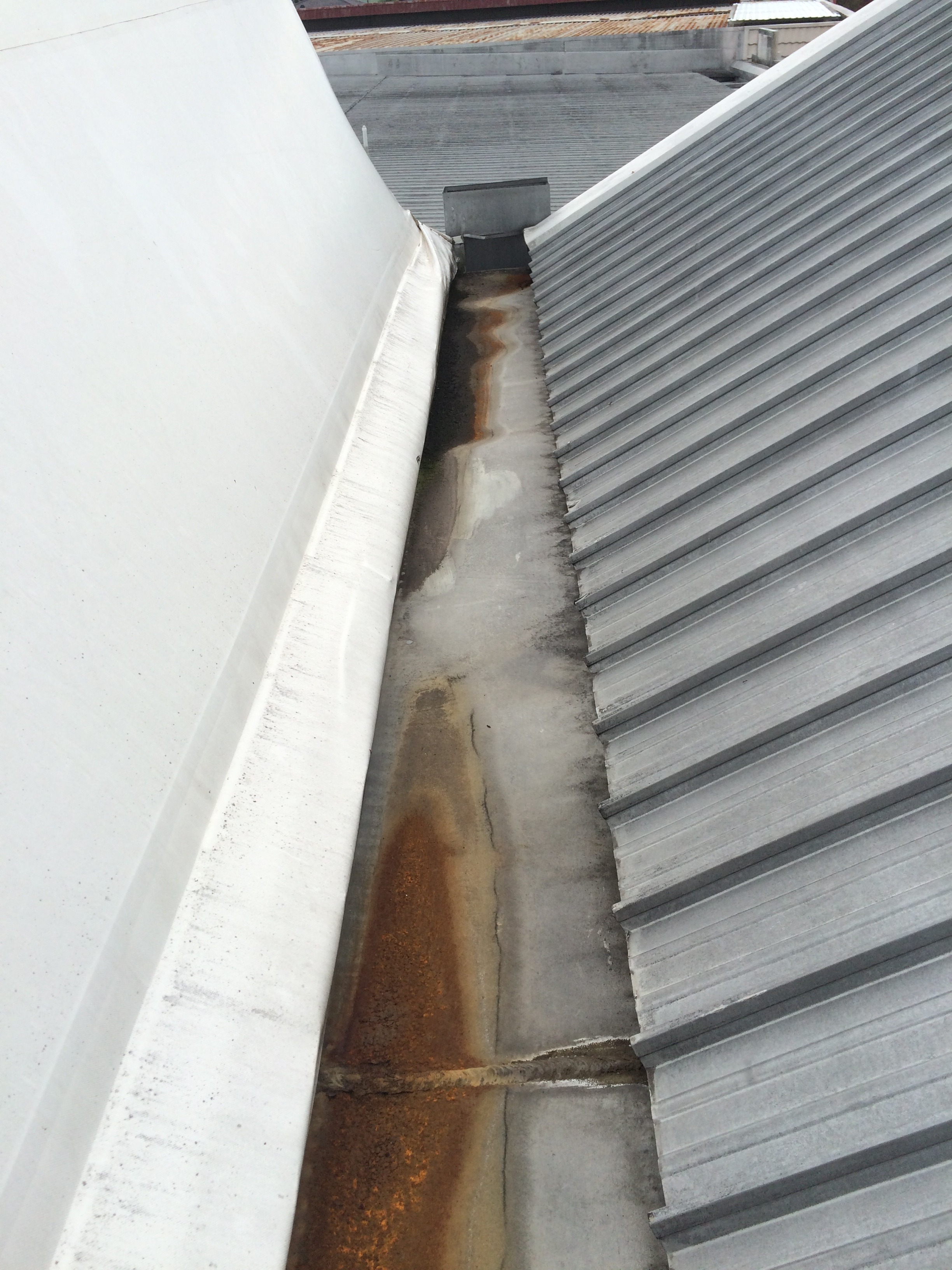
6. Damaged or incorrectly installed valley flashings
Have you or other trades been spending too much time in the valley? Often the safest place to walk up and down a roof is along the valley, but unless your steps are exact, you may be causing damage to the turned up edges of the valley gutters that prevent water spilling into the roof cavity – hopefully they were turned up in the first place!

7. Holes caused by rust and corrosion
Well, it certainly could be! Rust is one of the most common and obvious causes for leaks. Whether it’s due to the installation of incompatible materials or the typical oxidisation process of iron, once the metal has broken down - it provides little protection from water ingress.
What may begin as slight discolouration can develop into a serious issue over time, so it’s important to make regular inspections and monitor the speed of deterioration. Once substantial rusting has occurred, the most efficient solution to prevent leakage is generally replacement of the rusted elements. You can rest assured however that this option will put an end to your issues the first time!
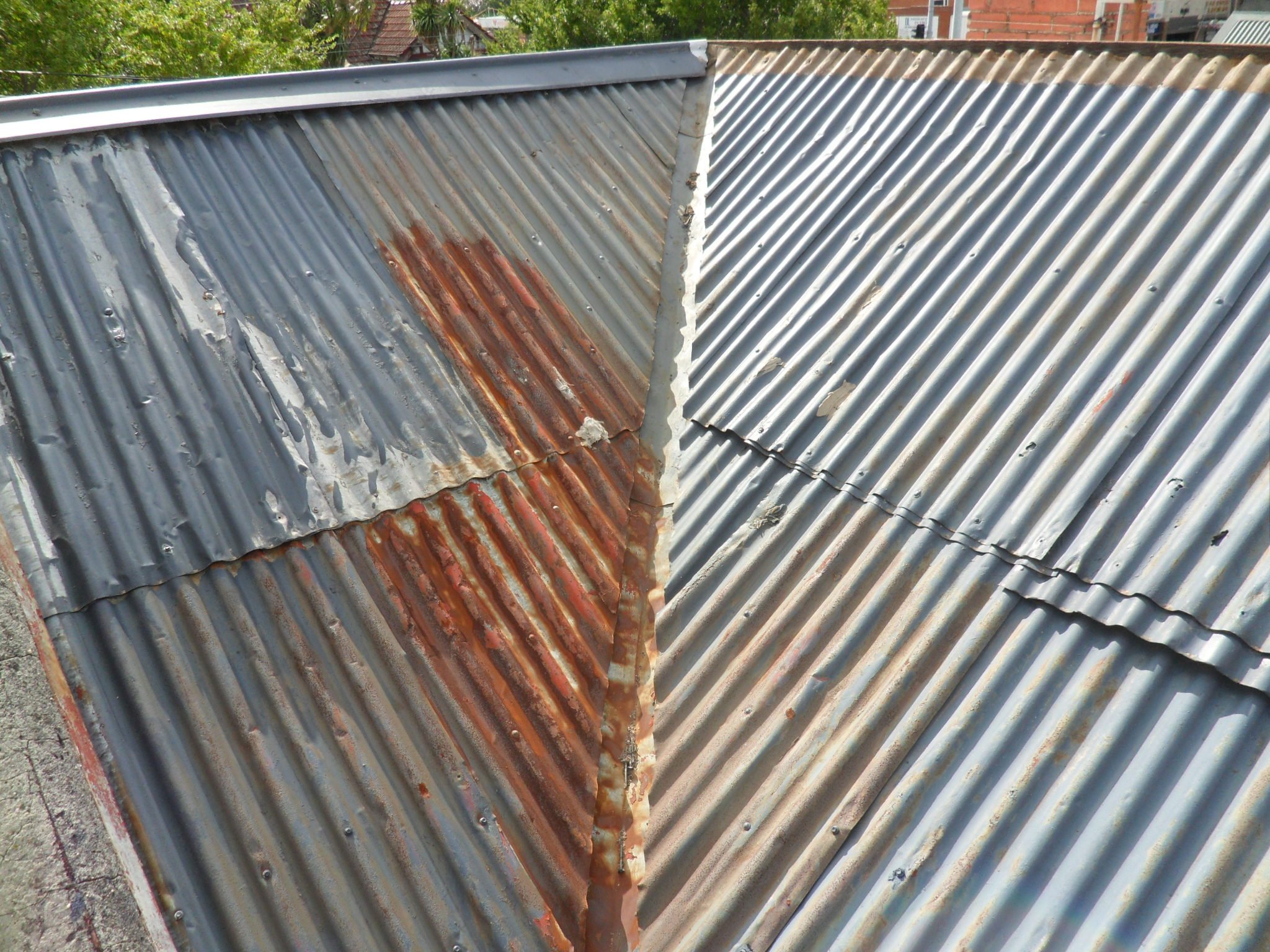

8. Moisture and condensation build up
Now, most would argue that condensation is not a leak per say, however the long term impacts can be the same. Water damage occurs when moisture builds up on the underside of the roof sheets and travels from the sheets to the internal spaces below. You won’t get water pouring in, but it may lead to water marks, stains and mould and mildew over time. Luckily, there are anti-condensation blankets which can be installed on the underside of the sheets to prevent this from happening!

9. Pests
Not only are they a nuisance, but the pests that get into your roof space are often also responsible for damage to your property. Their activity may be responsible for leaks in a number of ways:
- Chewing through insulation: as mentioned above, anti-con blanket is designed to prevent condensation build up – if the blanket is significantly damaged it may impede its ability to do so.
- Chewing through plumbing: this is a bit of a red herring situation, in that it may cause you to think there is a roof leak, whereas it’s damaged plumbing. It’s becoming more commonplace that plumbing is installed in the roof these days, so this can be especially misleading.
- Possum entry = water entry: You may find that a possum’s point of access is the perfect entry for water, e.g. a loose flashing, which gradually gets displaced over time as a possum squeezes in and out may allow water to enter.
10. Insufficient water run off
The truth is, this probably isn’t something you had any control over, however it’s also true that low pitched roofs are more susceptible to leaks. Compared to roofs with steeper pitches where downward water flow is increased, shallow or flat roofs have poorer drainage capabilities. Water therefore tends to pool and leaks develop more quickly. Low sloped roofs are also more prone to uplift and displacement may allow wind driven rain to enter the roof cavity.
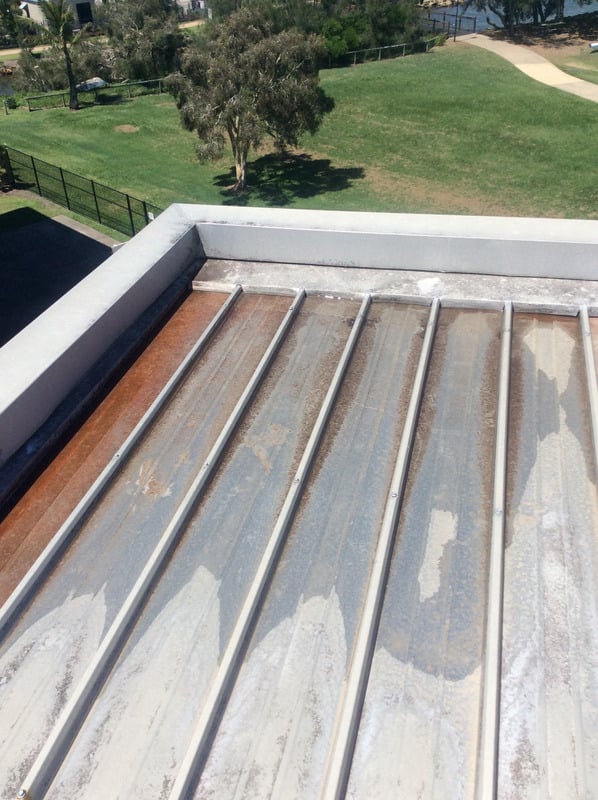
If you're concerned about a leaky roof, or looking at leak prevention proactively, please don't hesitate to give us a call and have a chat with one of our friendly roofing experts!
1800 476 634
You can also request a complimentary roof inspection and quote by clicking this link:
Did you find the information in this blog useful? Please comment below!
Updated 13th Jan 2020 to provide most current information




